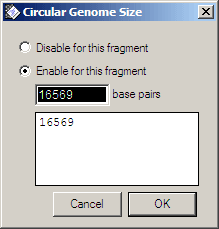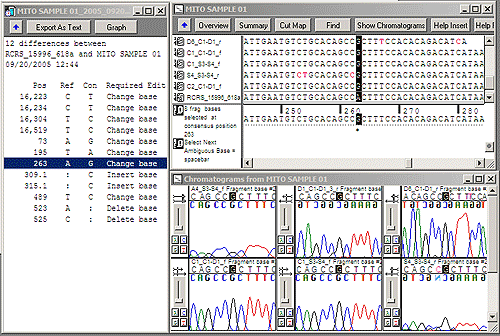Sequencher for Forensics
For Forensic Science, the analysis of mitochondrial DNA is an invaluable tool when confronted with very low quantities of and/or highly degraded DNA. The FBI and the Armed Forces DNA Identification Laboratories (AFDIL) both depend on the Forensic version of Sequencher for mtDNA analysis.
The standard version of Sequencher has many functions suitable for mitochondrial analysis. You can:

- Import data from many sources including automated sequencing files with their associated traces and confidence values.
- Trim sequence for low quality and/or primer contamination.
- Build contiguous assemblies from forward and reverse sequencing reactions.
- Edit assembled trace data to resolve ambiguous base calls and create a consensus.
- Compare assembled results of sequencing reactions to the Cambridge or Anderson reference sequence.
Additional information about the regular version of Sequencher is available here.
Gene Codes provides a Forensic version of Sequencher with special enhancements just for the Forensics community.
Identify differences based on the circular mitochondrial genome

Sequencher allows you to define consistent numbering for the identification of your mitotype. In Sequencher, a Reference Sequence determines the numbering of all other sequences with which it is assembled. In the forensic version of Sequencher, the Reference Sequence numbering is further enhanced by your ability to Set Circular Genome Size. This function allows you to define the maximum base number in a sequence, 16, 569, for the human mitochondrial genome, after which the numbering begins again at position one.
The image below represents the coverage map for an assembly to the Cambridge
Reference sequence. The regions in dark green indicate coverage from sequences
in both the forward and reverse directions. Note how the numbering starts at
base position 15, 953, at the 5'end, and then the numbering restarts at 1 as it
crosses the replication of origin. 
You can also highlight the location of standard primers on the reference
sequence 
Verify Mitotypes
The Difference Review provides you with a comprehensive list of all of the bases that differ from your reference sequence. Click on any base in the list, and you will automatically open the positions in your contig and chromatogram editors that support that difference.

Edit a base in any of the open windows, and the other windows automatically update.
M-FISys integrates the mtDNA analysis functions in Sequencher with the ability to handle the other forms of DNA information commonly used for identification.